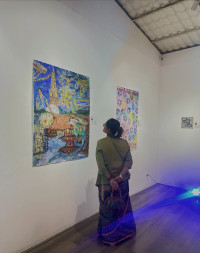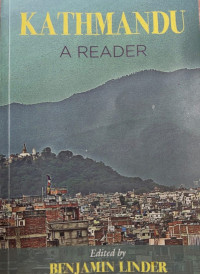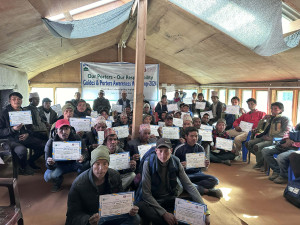Culture & Lifestyle
Traditional meets trendy
Sharone S Joshi, founder of Koseya, discusses Nepal’s evolving fashion scene, and the industry’s opportunities and challenges.
Timila Maharjan
Saree has remained a timeless fashion icon in Nepal, adapting to modern trends while preserving its cultural and traditional significance. Despite evolving to meet the demands of changing generations, its essence and heritage remain cherished, making it a perfect blend of tradition and contemporary style.
Sharone S Joshi, founder of Koseya, a recently established fashion brand says, “What sets sarees apart as a garment from the rest is that they effortlessly follow the body’s natural lines without restricting it to a particular shape. They embrace every curve and angle.”
In this conversation with the Post’s Timila Maharjan, Joshi discusses the current saree fashion scene in Nepal, customers’ evolving preferences, and how Koseya is blending tradition with modernity while navigating the challenges of the competitive fashion industry.
What inspired you to shift from finance to fashion?
My journey from finance to fashion might seem like a leap between two different worlds, but it allowed me to merge logic with creativity. With a finance background from the UK and an MBA in Innovation and Entrepreneurship from Symbiosis Institute, India, my career began with a focus on strategy, precision, and value. However, I’ve always believed that true growth comes from exploring uncharted territories.
Fashion, like finance, demands an understanding of value—but in this case, the value lies in design, identity, and storytelling. Transitioning to the fashion industry was not just a career shift but a journey that allowed me to combine analysis and creativity. It gave me a platform to engage in cultural expression and contribute to a space that celebrates individuality and tradition.
Koseya was born from my admiration for sarees and art. The name Koseya comes from Kausheya, which means silk in Sanskrit, reflecting the brand’s foundation in pure silk sarees. While sarees remain our focus, we’ve also expanded into scarves for women and silk accessories like neckties, pocket squares, and cravats for men.
Blending saree design with artistic expression was a natural extension of my vision. Koseya is more than a brand—it celebrates self-expression and timeless style. By merging art and tradition, we aim to craft pieces that honour the rich heritage of sarees while redefining them for the modern taste.
How would you describe the current fashion landscape in Nepal?
The fashion industry in Nepal is still growing, rich with potential and innovation. As Nepali designers gain confidence and resources, the country is steadily positioning itself as a unique and meaningful contributor to the global fashion landscape. With the proper support, Nepal’s fashion scene will likely continue flourishing, bringing a distinctly Nepali voice to the world of style.
You mentioned that the fashion industry is expanding. How has it evolved, particularly in the context of sarees?
The fashion scene in Nepal, particularly in the saree market, has undergone a transformation in recent years. Traditionally, Banarasi silk sarees were the obvious choice for formal wear. On the other hand, cotton sarees were the go-to choice for everyday wear. However, there has been a significant shift towards lighter, more versatile fabrics such as georgette, chiffon, satin and crepe silk, which offer a modern and comfortable alternative without compromising style.
In addition to changes in fabric, the saree’s aesthetic has also evolved. The shift from plain, traditional designs to sarees featuring vibrant colour palettes and floral prints has become more pronounced. These modern sarees are reimagined with contemporary prints, geometric patterns, and bold, dynamic colours, appealing to younger generations who want to blend tradition with a contemporary flair.
This evolution in material and design has made the saree more accessible, versatile, and fashionable for a wider audience. Whether for formal occasions or casual gatherings, sarees in Nepal are now seen as a stylish, adaptive garment that reflects both heritage and modern trends.
Moreover, the rise of fashion designers and luxury brands in Nepal has played a significant role in the evolution of the saree market, particularly through the introduction of intricate embellishment work. Designers are reimagining traditional sarees by incorporating contemporary techniques such as embroidery, sequins, beads, and stonework, transforming the saree into a statement piece.
Do your customers lean more toward traditional sarees, or are modern ones becoming their preference?
Preferences for sarees are balanced between traditional and modern styles, influenced by personal taste, occasion, and fashion trends.
Many still prefer traditional ones for their elegance, cultural heritage, and timeless appeal, especially for weddings, festivals, and other ceremonial events. Rich handlooms like Taas (gold embedded work) and Banarasi sarees remain popular because they carry a sense of authenticity, craftsmanship, and heritage that modern styles often don't replicate. These sarees symbolise tradition and are often treasured as heirlooms.
Younger generations and urban professionals gravitate towards modern interpretations of the saree for everyday wear or events. These include pre-draped sarees, saree gowns, and lightweight fabrics with minimalistic designs. Modern sarees are often chosen for their practicality and ease of styling, allowing them to fit into fast-paced lifestyles.
Overall, people embrace both traditional and modern styles, often mixing them to create a personalised look. This blend of styles also reflects the evolving identity of saree wearers, who enjoy honouring tradition while expressing contemporary aesthetics. So, both styles have their place, and the choice often depends on the occasion and individual’s style preference.

Has the demand for sarees changed with the increasing influence of Western fashion trends?
Despite Western fashion trends, the demand for sarees has remained the same even today. Sarees have become a bridge between generations, cherished by elderly women and young fashion enthusiasts. Sarees are no longer seen as purely traditional attire but as a versatile canvas for creativity.
Sarees appeal to young graduates, marking special milestones such as school/college graduations and farewell parties/ceremonies. I have observed that most of the female executives in the corporate world opt for sarees projecting confidence and grace.
Young women are styling sarees with modern accessories, pairing them with crop tops or contemporary blouses, which has helped them remain relevant and fashionable for all ages.
Western fashion has a significant impact on Nepal, but does Nepali traditional fashion have any influence on Western fashion?
The influence of celebrities like Kim Kardashian, Gigi Hadid, and Zendaya donning sarees on global red carpets has indeed given this traditional garment a new, international spotlight. By embracing sarees in high-profile events, these stars have expanded the saree's appeal beyond South Asia and showcased its elegance, versatility, and timeless beauty to a broader audience. This visibility has helped elevate the saree into a global fashion statement, inspiring designers worldwide to incorporate its aesthetics and allure into contemporary fashion. It’s a powerful testament to how cultural attire can transcend borders.
What are the opportunities and challenges of working in Nepal’s fashion industry?
Opportunities
The fashion scene in Nepal is evolving, offering many opportunities for innovation and brand growth. The key is to balance creativity with a purpose-driven approach that aligns with consumers' changing values.
Fashion is about self-expression. Hence, there is a need for brands to be inclusive and diverse. Highlighting and honouring diverse cultural aesthetics can attract a broader, global audience. Updating traditional, ethnic attire with modern elements can resonate with younger generations looking to blend heritage with contemporary style. Brands prioritising sustainability, community support, and social causes can build loyal and meaningful connections with their audience.
As the shift toward online shopping accelerates, brands have an unprecedented opportunity to expand their reach beyond Nepal. By enhancing e-commerce platforms and investing in targeted digital marketing, brands can connect with new customers in Nepal and globally. Likewise, menswear is growing significantly in the Nepali market, which shows a shift in the consumer mindset. Men can be seen experimenting with their style more openly than ever. This evolving attitude presents exciting opportunities for fashion entrepreneurs who can tap into a market for both classic and contemporary options.
Social media has been a key driver of this transformation, rapidly spreading trends across borders and cultures. What’s popular in one country can instantly influence fashion choices worldwide, creating a dynamic, interconnected market. For fashion brands, this means a chance to be agile, responsive, and innovative, crafting collections that align with both local preferences and international influences. Increased fashion brand collaborations have helped bring specialised expertise to each project.
Challenges
Nepal’s fashion market has become highly competitive, with new designers and brands constantly emerging everywhere, especially in the saree and ethnic wear segments.
In any business landscape, challenges exist at both micro and macro levels, impacting decisions and growth trajectories. Currently, inflation remains relatively high, and market uncertainty is a pressing concern across the globe. Such market volatility can be challenging for luxury brands. Such brands are often vulnerable to economic slowdowns, as shifts in consumer sentiment and spending habits tend to impact high-end fashion purchases first. Decreased consumer spending on luxury items can directly affect revenue and growth.
Staying relevant in a rapidly changing fashion industry is both an art and a challenge, requiring brands like Koseya to deeply understand client desires and create emotionally resonant, trend-forward designs. Balancing affordability with quality and managing disruptions in material supply is an ongoing challenge.




 13.12°C Kathmandu
13.12°C Kathmandu















